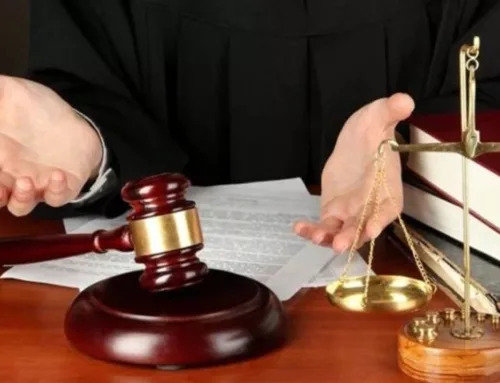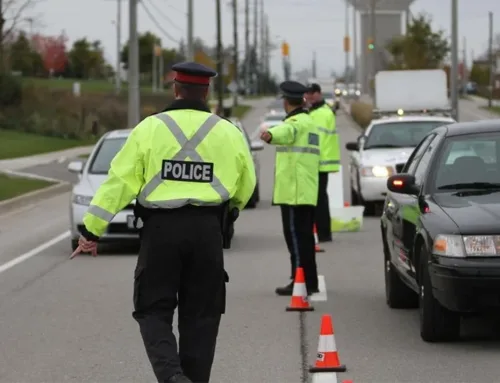A collision on Ontario’s roads can be distressing for everyone involved. When the driver involved in the accident leaves the scene without providing information or aid, the situation becomes even more serious. This act, commonly referred to as a hit and run in Ontario, can result in severe penalties, as well as civil liabilities. In many cases, a moment of panic or confusion may lead someone to flee the scene, only to discover later the gravity of leaving without fulfilling legal obligations.
In this article, we will explore the core elements that constitute a hit and run, along with potential charges, fines, and licensing consequences under Ontario law. We will also address civil liabilities, possible defences, and how a paralegal can assist if you have been accused of a hit and run offence. For those who seek a deeper understanding of what is considered a hit and run, this guide will help clarify the crucial aspects of such an incident and what steps you can take if you find yourself in a related situation.
What Constitutes a Hit and Run in Ontario?
A hit and run occurs when a driver involved in a motor vehicle collision leaves the scene without stopping to identify themselves or offer assistance to injured parties. According to Ontario law, any driver who is directly or indirectly involved in a collision must:
- Stop their vehicle immediately.
- Provide contact details, licence, and insurance information to the other party or any law enforcement officer at the scene.
- Assist in obtaining medical help if someone is injured, when reasonably possible.
Failing to fulfill these responsibilities may lead to hit and run charges imposed under the Criminal Code or the Highway Traffic Act. Although some incidents might be minor, such as tapping a parked car or scraping a mailbox, leaving the scene without making an effort to exchange details or report the damage can still qualify as a breach of the law.
Many individuals wonder what is considered a hit and run beyond the typical scenarios of high-speed collisions. Legally, it covers any incident where physical contact occurs (including with another vehicle, pedestrian, or property) followed by the driver’s decision to flee. Even if no injuries result, the act of abandoning the scene without offering information or assistance can lead to substantial legal ramifications in Ontario.
Legal Consequences of a Hit and Run
When a driver departs the scene of an accident, they may face both criminal and administrative penalties. These consequences often depend on the severity of the collision, whether there were injuries or fatalities, and whether the accused has any prior convictions. The law aims to deter motorists from leaving the scene by imposing progressively stricter penalties for more serious outcomes.
A crucial aspect of Ontario’s legal framework is that failing to remain at the scene of a collision is regarded not just as a traffic violation but also as a serious offence under certain circumstances. Below, we will break down the charges, potential penalties, and how these can affect your driving privileges and insurance rates.
Charges and Penalties
Under the Criminal Code of Canada, failing to stop at the scene of an accident can lead to severe punishment. The Code classifies such conduct as an offence when there is an intent to escape civil or criminal responsibility. A driver who knowingly leaves the scene can be charged with “failure to stop” or “failure to remain.” Convictions under these sections can carry:
- Significant fines set by the court.
- Possible jail time, depending on the degree of harm caused and the existence of any aggravating factors (e.g., a prior record).
- A criminal record, which can have far-reaching effects on employment and travel opportunities.
Under the Highway Traffic Act, failing to stop can also result in harsh monetary penalties and potential licence suspensions. Importantly, a person may face charges under both the Criminal Code and the Highway Traffic Act in serious cases, especially if injuries or fatalities are involved.
It is common to hear about a hit and run charge Ontario prosecutors bring when the Crown believes the driver’s intention was to avoid responsibility or conceal wrongdoing. Such charges can escalate rapidly from a mere provincial offence to a criminal matter once the intent behind leaving the scene is proven.
Fines and Licence Suspension
Those convicted under the Highway Traffic Act for a hit and run may encounter:
- Fines range from a few hundred dollars to several thousand dollars.
- The possibility of losing driving privileges for a specified period.
- Licence suspensions or revocations if the situation involves serious injuries, property damage, or repeat offences.
Even if no injuries occur, leaving the scene can still attract penalties because Ontario law requires drivers to stop and exchange information. The exact monetary fine will vary based on the specific details of the case, but it remains essential to understand that any intentional act of fleeing can carry consequences more severe than other traffic infractions.
Impact on Insurance Rates
Another key repercussion of a hit and run comes in the form of higher insurance premiums. Whenever a collision is reported, insurance providers look into the details to assess risk. If a driver is identified as having left the scene, the insurer may regard this as a serious violation of the policyholder’s obligations.
As a result, insurance companies often:
- Significantly raise premiums upon renewal.
- Cancel an existing policy if they deem the risk too high.
- Refuse future coverage or require the driver to seek insurance from high-risk insurers, which carry much higher premiums.
In summary, the immediate legal implications might include criminal or provincial charges fines, points and possible suspensions, but the long-term financial burden stemming from surging insurance costs can become a notable consequence.
Civil Liabilities for Hit and Run Accidents
In addition to criminal or provincial penalties, a driver who leaves the scene may face civil litigation for damages or injuries caused by the collision. If law enforcement identifies and charges the individual who fled, the injured party (or any other affected party) can sue for:
- Medical expenses and rehabilitation costs.
- Lost income if the injuries prevented them from working.
- damages such as pain and suffering or emotional distress.
Even if the driver initially avoids detection, modern investigative techniques and surveillance cameras often uncover crucial evidence that leads to identification. Once identified, the driver who committed the offence might deal with lawsuits that can stretch out over many months or years.
To complicate matters, insurance coverage might be jeopardized by the very fact that the at-fault driver fled the scene. Insurance policies typically require cooperation with the insurer, and intentionally leaving the scene contravenes that duty. Thus, civil settlements or judgments may become the direct responsibility of the at-fault driver, potentially resulting in considerable personal financial strain.
Steps to Take If You’re Accused of a Hit and Run
Facing an accusation of a hit and run can be overwhelming. The primary concern for many is whether they will face charges, a possible arrest, or have their driver’s licence suspended. If you are under investigation for leaving the scene of a collision, consider the following steps to protect yourself:
- Stay Calm and Gather Information: If notified of the accusation, attempt to document any details relevant to the incident. Record where you were at the time, the state of your vehicle, and any potential witnesses who can confirm your version of events.
- Do Not Panic or Flee Further: It is crucial not to compound the issue by trying to hide or ignore inquiries from the authorities. Willingness to cooperate with law enforcement, within reason and law, demonstrates a good-faith effort to address the matter.
- Consult Legal Assistance: Leaving the scene is a serious charge in Ontario. Seek advice from legal professionals, including paralegals who handle provincial offences and traffic matters. Having guidance can help you navigate possible defences and reduce penalties.
- Avoid Making Admissions Without Counsel: You have a right to avoid self-incrimination, so refrain from making detailed statements until you understand your legal position thoroughly.
While an allegation does not automatically mean a conviction, taking the right steps early can significantly influence how the matter is resolved.
How to Report a Hit-and-Run in Ontario
If you have been the victim of a collision and the other driver leaves the scene, the first step is to ensure your safety and that of any passengers. Your priority should be obtaining medical attention if necessary and alerting the police about the incident.
Here is a suggested list to follow if you become involved in or witness a hit and run:
- Stay Safe: If possible, move your vehicle to a secure area, especially if traffic is heavy.
- Call 9-1-1 for Emergencies: If anyone is injured, immediate medical help is paramount.
- Take Note of Details: Make an effort to gather identifying information about the fleeing vehicle, such as its colour, make, model, licence plate number (even partial), and direction of travel.
- Seek Witness Statements: If bystanders or other drivers observed the incident, ask for their contact details. Their testimony could be crucial in identifying the driver who fled.
- Document the Scene: Photograph or record the damage to your vehicle and its position on the road, along with any environmental factors like weather or lighting conditions.
- Report to Law Enforcement: Contact the nearest police station or use a Collision Reporting Centre if directed to do so for non-emergency cases.
Remember that the more evidence you provide, the easier it might be for the authorities to find the driver who fled. Additionally, thorough documentation can support your insurance claim and strengthen any legal case that may arise.
Defences Against Hit and Run Charges
If you are charged with failing to remain at the scene, the law does offer possible defences. However, each defence depends on the specific facts of your case. Some common arguments include:
- Lack of Knowledge: Arguing that you were unaware a collision had occurred. This could apply in situations where an impact was extremely minor, such as brushing up against another vehicle in a crowded parking lot without sensing it.
- Immediate Safety Concerns: Explaining that you left the scene to seek urgent medical attention or to protect yourself from a dangerous situation (for example, a threatening confrontation).
- Emergency Circumstances: Demonstrating that you needed to leave to address another emergency, though you intended to report the collision once safe or able to do so.
It is imperative to note that claiming you simply panicked or were afraid of legal repercussions will generally not absolve you of responsibility. The law is strict about requiring drivers to remain at or return immediately to the scene. Nonetheless, presenting a strong defence can sometimes reduce the severity of sentencing or fines if you can establish that leaving the scene was due to factors beyond your control.
How a Paralegal Can Help in Hit-and-Run Cases
The legal complexities around a hit and run charge Ontario can feel daunting. A paralegal who handles provincial offences can provide in-depth procedural guidance, help gather evidence, and negotiate on your behalf. Although a paralegal’s role differs from that of a lawyer, they more often than lawyers deal with traffic court proceedings and are well-versed in the Highway Traffic Act.
Some notable ways a paralegal can help include:
- Case Assessment: Reviewing the police report, witness statements, and other evidence.
- Representation: Appearing on your behalf in traffic court, discussing possible plea agreements, or pursuing a defence strategy.
- Document Preparation: Filing necessary paperwork accurately and on time.
- Legal Advice on Strategy: Explaining potential outcomes and guiding you on whether to contest the charge or seek a resolution that minimizes penalties.
If you require such support, reaching out to Traffic Paralegal Services can be beneficial. In a serious matter like leaving the scene, professional guidance can make a significant difference in navigating the process efficiently.
Preventing Hit and Run Incidents
While nobody anticipates becoming involved in a collision, understanding your obligations can drastically reduce the risk of facing hit and run charges in Ontario. Practicing defensive driving and remaining composed after an impact are both crucial. Below are some strategies to help prevent these offences from arising in the first place:
- Stay Calm After a Collision: Rather than driving off in panic, take a few moments to collect your thoughts and evaluate any injuries or damages. If your vehicle is operational, move it out of traffic to a safer area.
- Exchange Information Promptly: Whether the other party is a pedestrian, cyclist, or another driver, share your contact and insurance details immediately. This good-faith effort can avert misunderstandings.
- Assess Vehicle Damage: If you accidentally hit a parked car or damage property (such as a fence or mailbox), do not leave without making an attempt to find the owner or leaving a note with your contact information.
- Document Everything: Photograph the scene, note the time and date, and obtain contact information from anyone who witnessed the collision.
- Report to Police if Needed: If injuries or significant property damage occur, contact law enforcement or a Collision Reporting Centre right away.
By fulfilling your obligations and ensuring others can reach you regarding the incident, you eliminate the grounds for a hit and run in Ontario charge to arise.
Conclusion
Failing to remain at the scene of an accident is a serious offence in Ontario, with substantial legal, financial, and personal implications. Whether you are confused about how much is a hit and run ticket or anxious about hit and run demerit points, it is vital to recognize that penalties can include hefty fines, licence suspensions, or even criminal charges. Moreover, beyond government-imposed consequences, you may find yourself facing civil lawsuits and long-term damage to your driving record.
Ultimately, the best way to avoid these harsh outcomes is prevention: drive safely, remain vigilant, and comply with Ontario’s requirements whenever collisions occur. Doing so not only meets your legal obligations but also fosters an environment where all road users can feel secure.







Leave A Comment
You must be logged in to post a comment.